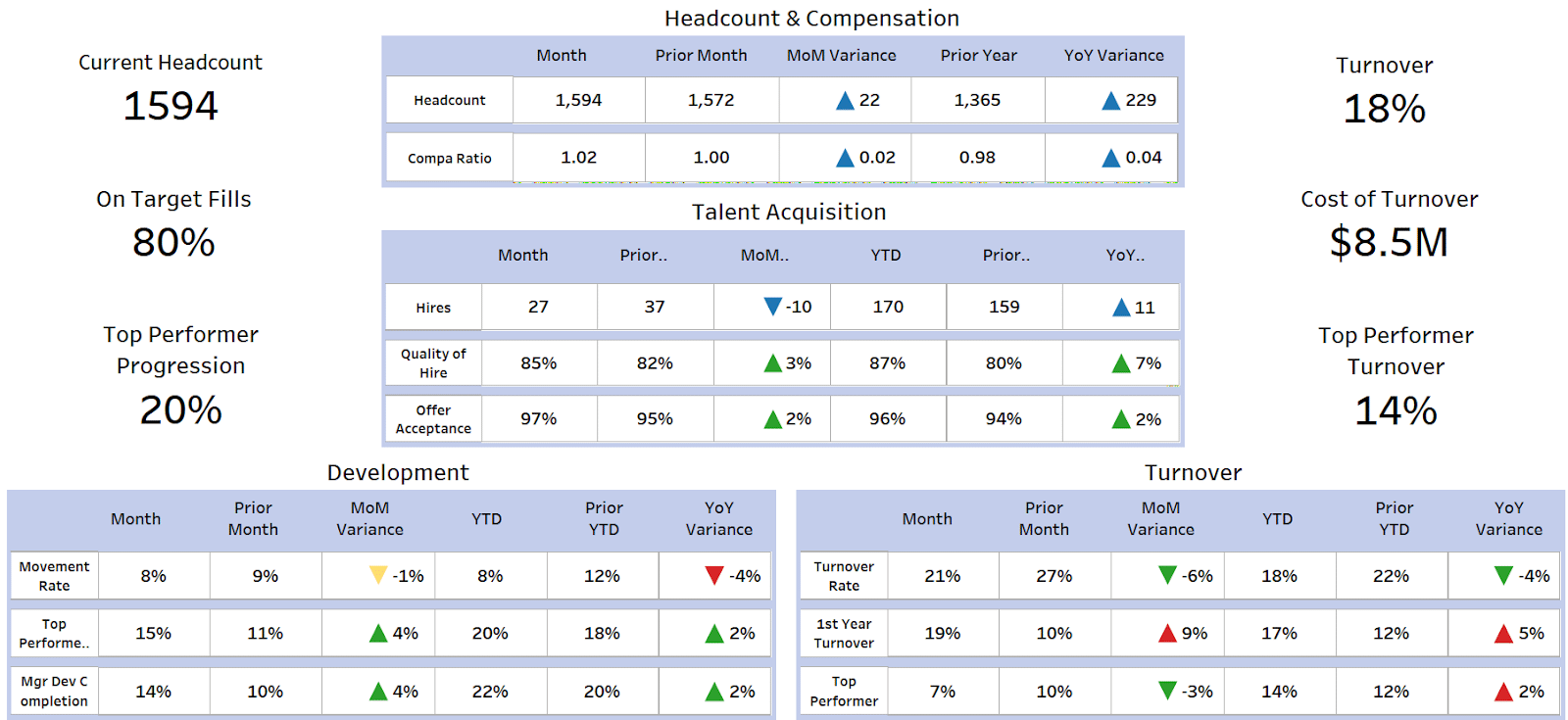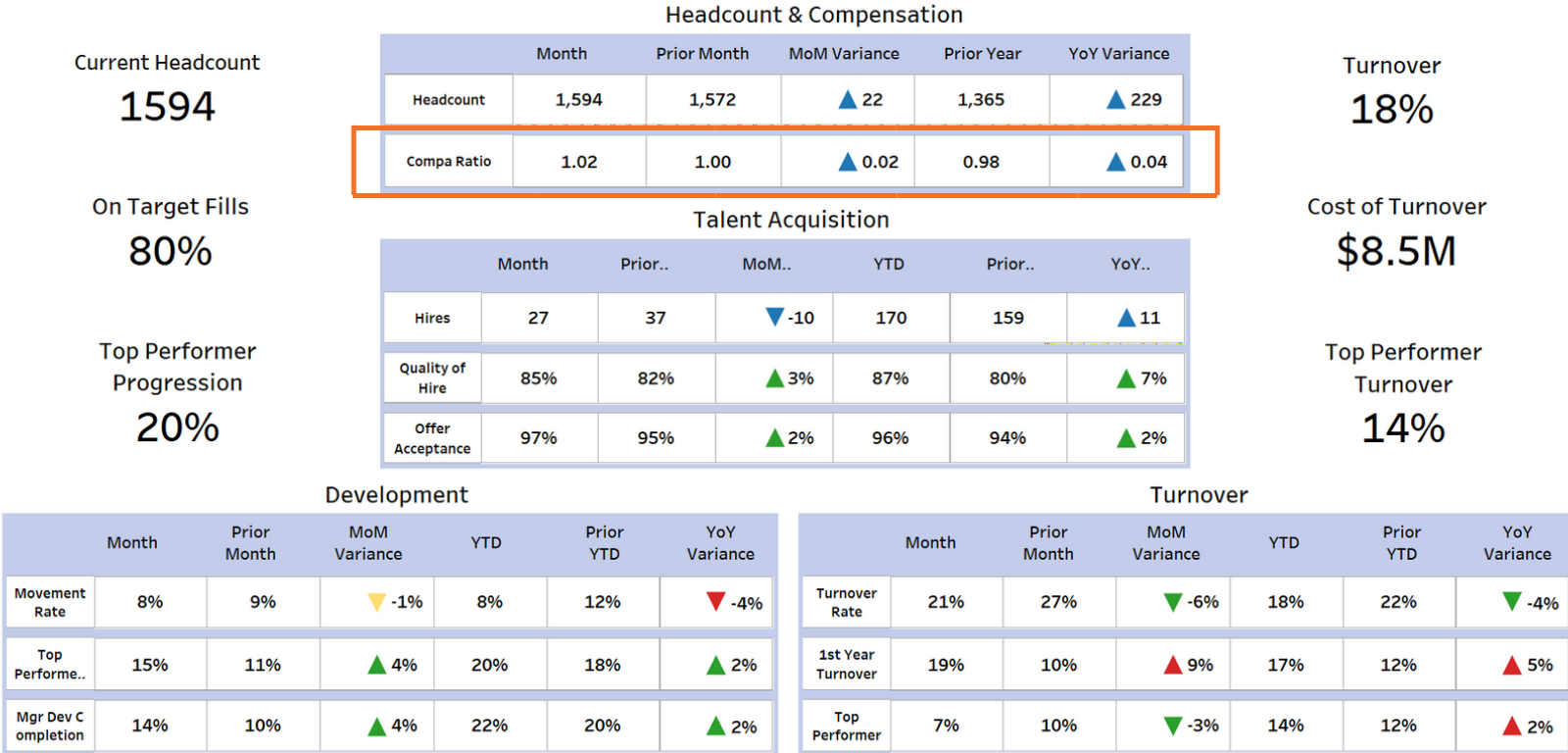The Executive Scorecard

Similar to the Executive Dashboard, but more granular and tabular in nature (to work better for those left-brained executives). The Executive Scorecard provides an at-a-glance snapshot of your organization from a people-perspective and provides HR leaders with more point-in-time numbers.
This is beneficial when companies are looking for data, progress and status towards meeting specific goals. For example, if first year turnover is an area of concern, the scorecard can be used to track investments such as retention programs, employee surveys, and training sessions to monitor if these investments are making a difference.
Companies are putting major investments behind these people programs, so HR leaders want to understand if they are delivering tangible results.
An HR leader brings their scorecard dashboard to an executive meeting to highlight key metrics. Before the HR leader used spreadsheets from different systems and sources, this was time consuming and difficult to gather. With the help of HireRoad they are able to bring all their data together to create a dashboard that contains the key metrics their company is looking for. The HR leader will be ready for any questions related to HR and metrics.

For example, let’s take a look at the metric, Compa Ratio. This is a common metric to assess pay. Compa Ratio compares an individual employee’s salary to the midpoint of a given salary range. Companies like their ratio to be close to 1 as this means that they are paying their employees within the targeted range they are looking to pay their employees.
At an executive level, it may not be necessary to see how everyone is getting paid, but it provides a snapshot on how the company is doing in terms of goals in pay equity or salary balancing. For example, it answers questions such as;
- What’s a typical employee’s progression through the pay range?
- Is our current salary range competitive? How is it compared to market benchmarks?
- Are there any areas of inequality?
These metrics provide executive leaders an overview on their employees and creates insightful conversations within the organization.
Keep in mind that not all scorecards are the same. You may find common HR KPIs such as turnover and headcount, but it all depends on a company’s goals and what metrics are valuable to them. For example a high growth company who’s looking to hire more may want to focus on metrics such as offer acceptance and hire quality. While a company at a steady stage may want to shift to retention and progression metrics.
To highlight this, see PCL Construction’s customer story on how they use the Executive Scorecard to communicate with their executives. With their customized dashboards they are able to tailor their HR message to their audiences and build success with people analytics.
The value of scorecards are that it brings disparate sources together, brings a customized view based on what’s most relevant to the organization, and an expertise and guidance with the HireRoad team on what best metrics and analytics to showcase.
At the end of the day, the most important metrics are the ones that are gonna support you to get the visibility that supports your business strategy. Learn more about metrics and reporting.